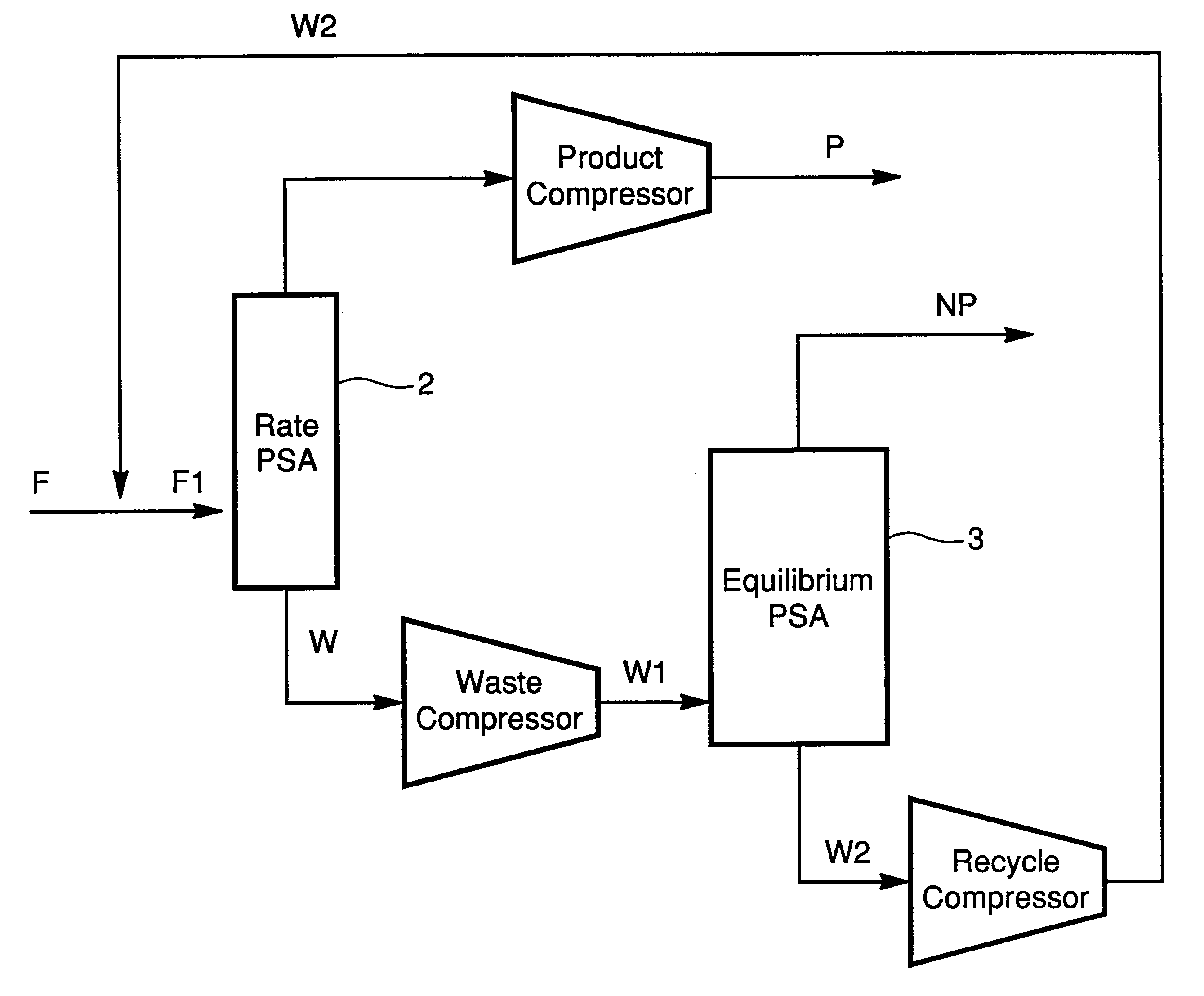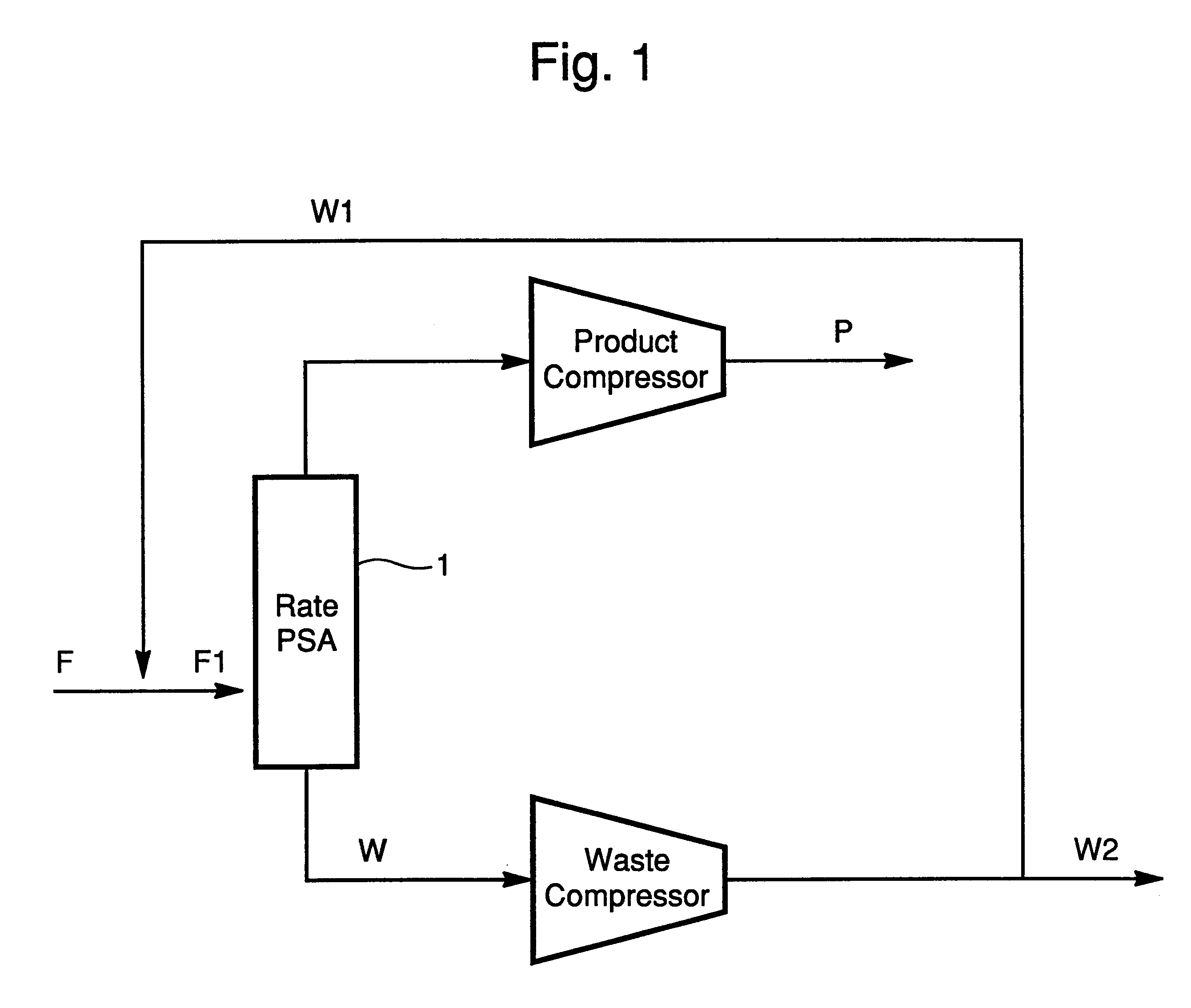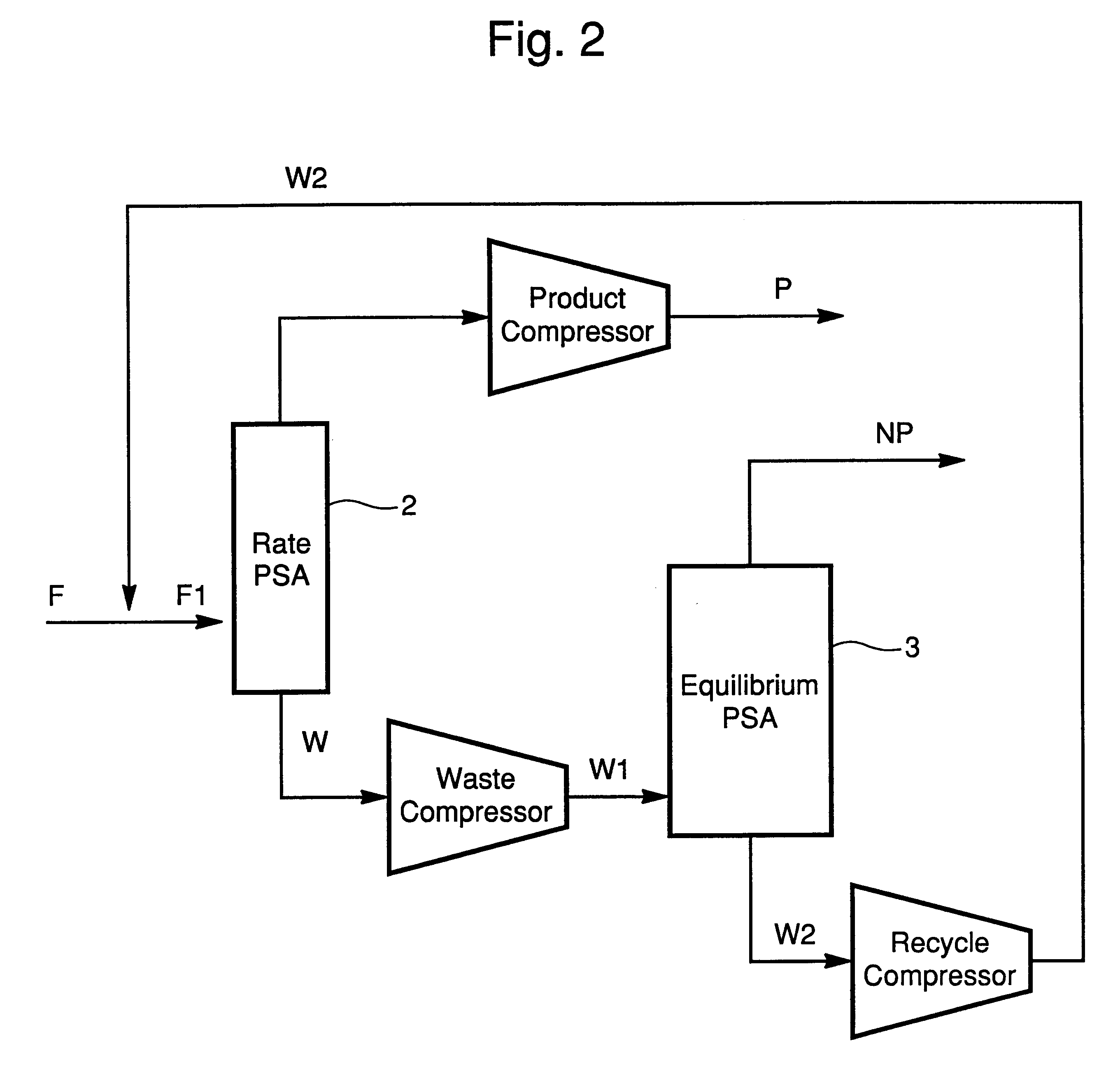Selective removal of nitrogen from natural gas by pressure swing adsorption
a technology of pressure swing and nitrogen removal, applied in the direction of separation process, colloidal chemistry, dispersed particle separation, etc., can solve the problem that neither process can make a complete separation, process is not cost-efficient for the recovery of two products, and the prior art process is not practical to obtain both key components at high purity
- Summary
- Abstract
- Description
- Claims
- Application Information
AI Technical Summary
Problems solved by technology
Method used
Image
Examples
example 2
In this example, reference is made to FIG. 3 and Table III. A feed gas of approximately 1 MMSCFD is introduced into a bed containing approximately 60 ft3 of adsorbent. The adsorbent consists of beads of CTS-1 or Ba-ETS4 zeolite with a mesh range of 4 to 40. The feed gas is fed for a period of approximately 80 seconds at a pressure of approximately 400 psia. The stream leaving the top of the PSA column 2 at this point is designated P in Table III. At the end of 80 seconds, the feed supply is closed off. The bed is then depressurized co-currently to another bed or a tank in a step referred in the art as equalization. The pressure at the end of the first equalization is approximately 240 psia. The bed is further depressurized co-currently to a pressure of 120 psia to a second bed or tank in an additional equalization. The two equalization steps are allowed approximately 20 seconds each to complete. After the bed has completed two equalizations it is further co-currently depressurized t...
example 3
The performance of the rate PSA as given in Example 1 represents average flows and compositions over a 24-hour time frame. After an initial 1-hour startup period the rate PSA starts producing a higher purity methane product stream P than the average purity as described in Table 2, subsequently after 8 hours the purity of the product stream drops below 96% purity. This phenomenon of a gradual degradation in performance is illustrated in FIG. 5. FIG. 5 shows the methane product purity vs. time for a fixed product flow rate. As can be seen in FIG. 5 the product purity vs. time is dropping.
Periodically heating the bed increases the nitrogen working capacity (amount of Nitrogen desorbed each cycle) of the rate PSA; it is believed that this is accomplished by lowering the methane loading on the adsorbent. The loss in nitrogen working capacity is illustrated by the lowering of product purity at a fixed product draw rate. This performance decline vs. time can be mitigated by periodically he...
example 4
Preparation of Potassium Exchanged XE Zeolite Beads ("Equilibrium") Adsorbent
I. XE Zeolite Synthesis:
The following reagents were added to a 1,000 gallon SS reactor: 904 kg of DI water, 435 kg of a sodium hydroxide solution (38.6% Na.sub.2 O), 578 kg of a potassium hydroxide solution (37.3% K.sub.2 O), 1,250 kg of N-Clear sodium silicate (28.7% SiO.sub.2 / 8.93% Na.sub.2 O) and 1,300 kg of Nalco 2372 sodium aluminate (19.9% Al.sub.2 O.sub.3 / 18.1% Na.sub.2 O) while stirring at .about.75 rpm. This stirred slurry was then heated to 75.degree. C. and reacted for 20 hrs. The resulting product slurry was filtered on a plate and frame filter press then washed with 1,000 gallons of DI water at 75.degree. C. This initially washed cake was reslurried in 1,000 gallons of DI water then heated to 75.degree. C. for 60 minutes. The reslurry was filtered on the plate and frame filter press then finally washed with 2,000 gallons of DI water at 75.degree. C. This washed XE zeolite cake was then potass...
PUM
| Property | Measurement | Unit |
|---|---|---|
| Fraction | aaaaa | aaaaa |
| Fraction | aaaaa | aaaaa |
| Fraction | aaaaa | aaaaa |
Abstract
Description
Claims
Application Information
 Login to View More
Login to View More - R&D
- Intellectual Property
- Life Sciences
- Materials
- Tech Scout
- Unparalleled Data Quality
- Higher Quality Content
- 60% Fewer Hallucinations
Browse by: Latest US Patents, China's latest patents, Technical Efficacy Thesaurus, Application Domain, Technology Topic, Popular Technical Reports.
© 2025 PatSnap. All rights reserved.Legal|Privacy policy|Modern Slavery Act Transparency Statement|Sitemap|About US| Contact US: help@patsnap.com



